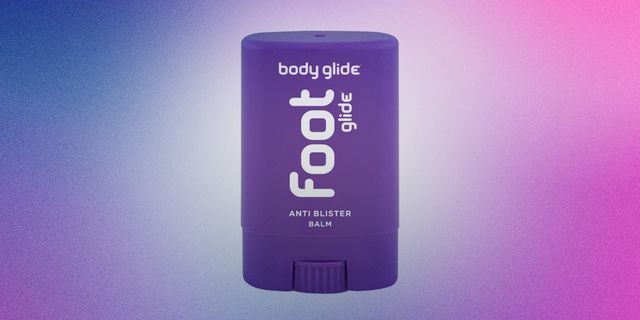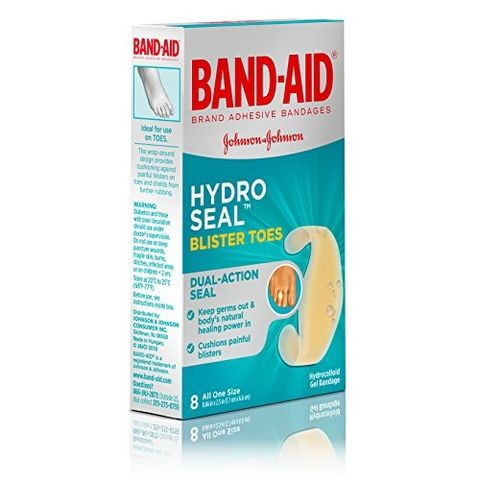Running News Daily
Running News Daily is edited by Bob Anderson. Send your news items to bob@mybestruns.com Advertising opportunities available. Train the Kenyan Way at KATA Kenya and Portugal owned and operated by Bob Anderson. Be sure to catch our movie A Long Run the movie KATA Running Camps and KATA Potato Farms - 31 now open in Kenya! https://kata.ke/
Index to Daily Posts · Sign Up For Updates · Run The World Feed
The 10 Best Blister Treatment and Prevention Products
Your emergency kit to soothe hot spots, and the gear to keep them from flaring up again.
To put it simply: Dealing with blisters is an actual pain. If you’re reading this, you probably already know that blisters are those red, raised areas that look like bubbles and occur mostly on the feet for us runners. Located on the upper layer of skin, they often fill with fluid and may also hurt or itch.

Many runners incur them during races, especially marathons, due to prolonged friction between your skin and sock or shoe. But blisters can pop up at any time, including during training runs. Non-running footwear can be to blame, as well.
While most blisters don’t pose a serious health risk, they shouldn’t be taken lightly. A painful blister can sideline a runner—or worse, get infected, especially if you use an unsanitary needle to pop it. Here’s a complete guide to blisters and our picks for the best products to treat and prevent them.
Common Causes of Blisters

Friction leads to annoying, painful blisters. The culprits are usually our socks, shoes, or both rubbing against our skin. Anything that intensifies rubbing can start a blister, including a faster pace, poor-fitting shoes, and foot abnormalities, such as bunions, heel spurs, and hammertoes. Heat and moisture intensify friction by causing your feet to swell.
beneath the skin that’s being rubbed.
Since moisture is also a factor, races are the perfect breeding ground for blisters: You’re sweating more by running faster and longer, sloshing through water stations, and if the weather is warm, possibly pouring water over your head.
Blister Treatment
If you have a large blister that’s big, nasty, even purple, and it’s affecting how your toes bend, give it a day or two to shrink, says Jordan Metzl, M.D., a sports medicine physician at the Hospital for Special Surgery in New York City and a marathoner. If it doesn’t improve, you might need to have your doctor pop it in the office under sterile conditions so it doesn’t get infected.
If you have a small blister that’s not prohibiting your movement, as tempting as it is to touch it, just leave it alone. “When the skin and the membrane of the skin are compromised by popping the blister, all of the bacteria that live on the skin normally can invade and could cause inflammation or an infection right away,” Metzl says.
You could end up making a very small problem much bigger by puncturing the barrier. You should also leave small blood blisters intact, too. Otherwise, you risk getting bacteria in your bloodstream. Cover it up so the swelling goes down, then try to fix the problem that caused it. Here are some prevention methods to treat small blisters:
Cut a hole the size of the blister in the middle of a piece of moleskin
Place the moleskin over the blister and cover with gauze
Let the blister dry out and heal on its own, or try covering the blister with a waterproof pad
If you absolutely must pop a blister (for example, if you’re traveling and can’t see your doctor), use caution. Metzl suggests cleaning the area and needle with soap and water and following with an antibiotic ointment. Then be sure to clean the area regularly to prevent infection.
One more note: A blister under a nail is best treated by a professional. You never want to deliberately remove the toenail.
Blister Prevention
To stop blisters before they even start to form, Metzl recommends making sure you’re wearing running shoes in the right size. And before you run, coat risky areas with products that dry out your skin, such as baby powder or anti-chafing powder, to minimize the effects of sweating. You can also use a lubricant such as Vaseline or anti-chafing balm to ease pain caused by rubbing.
Shoes that are too small will cause blisters under the toenails or on the tops or tips of the toes. There should be a thumb’s width of space between the toes and the end of the toe box. Pay attention to your socks, too: They should fit without bunching up at your toes or slipping down your heels, which are common blister hot spots.
If you suspect your shoes don’t fit, consult with your local running store to have an expert help you find your size via a virtual or in-person fitting, or look for socks with reinforced heels and toes to help reduce friction.
by Runner’s World
Login to leave a comment




